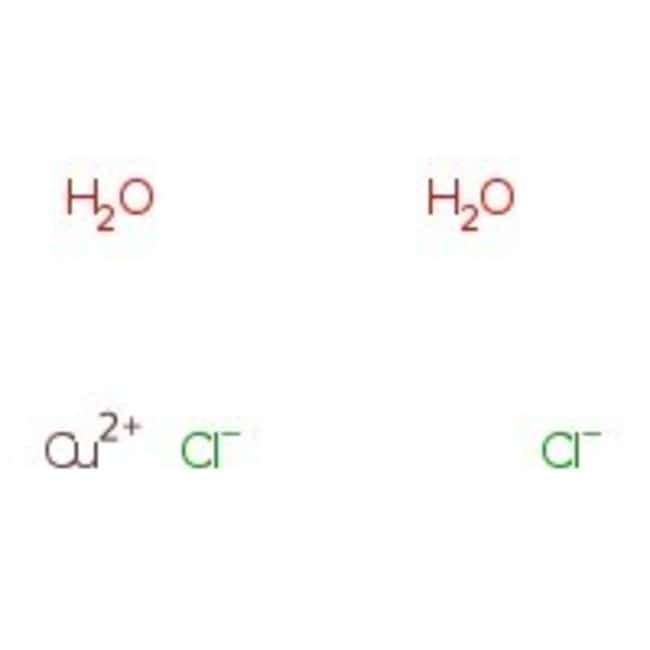Search Thermo Fisher Scientific
Copper(II) chloride dihydrate, 99%, Thermo Scientific Chemicals



Copper(II) chloride dihydrate, 99%, Thermo Scientific Chemicals
Chemical Identifiers
Specifications
Description
This Thermo Scientific Chemicals brand product was originally part of the Alfa Aesar product portfolio. Some documentation and label information may refer to the legacy brand. The original Alfa Aesar product / item code or SKU reference has not changed as a part of the brand transition to Thermo Scientific Chemicals.
Copper(II) chloride is used as a catalyst for organic and inorganic reactions, mordant for dyeing and printing materials, pigment for glass, ceramics, as wood preservative, as disinfectant, and as a catalyst in the output of chlorine from hydrogen chloride. It is likewise employed in the oil industry as a purifying agent, in the manufacture of laundry marking inks, in metallurgy to recover mercury from ores, in refining copper, silver and gold, in tinting baths of iron and tin, in photography, in pyrotechnics, and to get rid of lead compounds from gasoline and oils.
Solubility
Soluble in water, methanol and ethanol.
Notes
Incompatible with materials such as oxidizing agents, metals and acids.
Figures
Documents & Downloads
Certificates
Frequently asked questions (FAQs)
Citations & References
Safety and Handling
Classification of the substance or mixture
CLP classification - Regulation(EC) No 1272/2008
Label Elements
Signal Word
Danger
Hazard Statements
H302 + H312 - Harmful if swallowed or in contact with skin
H315 - Causes skin irritation
H318 - Causes serious eye damage
H400 - Very toxic to aquatic life
H411 - Toxic to aquatic life with long lasting effects
Precautionary Statements
P280 - Wear protective gloves/protective clothing/eye protection/face protection
P301 + P330 + P331 - IF SWALLOWED: rinse mouth. Do NOT induce vomiting
P302 + P352 - IF ON SKIN: Wash with plenty of soap and water
P305 + P351 + P338 - IF IN EYES: Rinse cautiously with water for several minutes. Remove contact lenses, if present and easy to do. Continue rinsing
P310 - Immediately call a POISON CENTER or doctor/physician
P332 + P313 - If skin irritation occurs: Get medical advice/attention